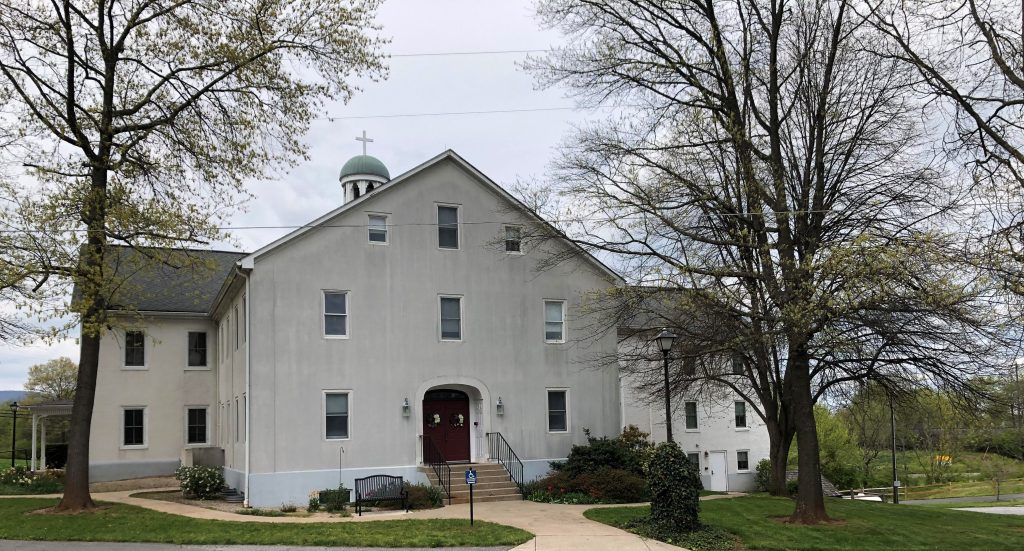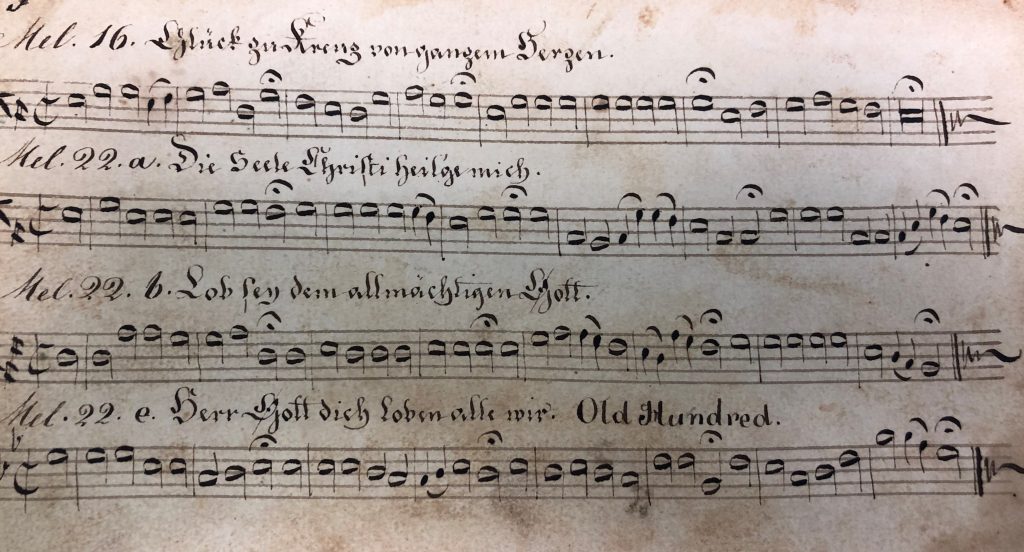The Creative Wire
A Living American Musical Tradition
July 5, 2022 | by Jacob Wilkinson
Edited by Christina Manceor

The musical history of the Moravian Church comprises one of the most fascinating chapters of the story of music in early America. Originating in Moravia and Bohemia in the 15th century, the Moravian Church was forced underground during the 30 Years’ War (1618 – 1648) and later reborn on the estate of Count Nicholas Ludwig von Zinzendorf in Saxony in the 1720s. The German-speaking Moravians of the 18th century established a peaceful, communal society at Bethlehem, Pennsylvania in 1741, the town where I took music lessons as a teenager. They performed music by Mozart, Haydn, and Beethoven at a time when most other European settlers lacked the ability and resources to do so. The Moravian composer and instrument builder John Antes composed some of the earliest chamber music by an American and produced some of the earliest American string instruments. The musical life of the Moravians continues to be exceptional to this day, as evidenced by the world-class Bach Choir of Bethlehem and the annual Moravian Music Festival in Bethlehem.
Though I took music lessons and attended concerts in Bethlehem as a teenager, it was not until I learned about the Moravians’ musical history in Dr. David Hildebrand’s “American Music” course at the Peabody Conservatory that I became interested in learning more about their musical life. In another one of Dr. Hildebrand’s courses, “Music in Maryland,” I started a research project involving the musical life of the Moravians at Graceham, east of Thurmont in Frederick County. Supported by a Peabody Career Development Grant, the project will culminate in a concert of vocal pieces. Each selection is an important part of Graceham’s musical history and will be performed by Peabody musicians on July 22 at Graceham Moravian Church.
Graceham is one of three Moravian Church communities still in existence in Maryland. Like other Moravian congregations of the 18th and 19th centuries, the community at Graceham often performed vocal pieces to celebrate important holidays and festival days. These pieces ranged from elaborate choral anthems accompanied by instruments to simple strophic songs for voice and organ. The diaries, letters, and council minutes from Graceham make frequent mention of musical celebration, and a catalog from 1831 lists over 250 pieces that belonged to the congregation. Several of these pieces have been edited and published, and many more exist in manuscript copies in the archives in Bethlehem, Pennsylvania and Winston-Salem, North Carolina. After visiting both of these archives, I assembled a program that gives a snapshot of what musical life was like at Graceham from 1790 to 1835. About half of these pieces have been newly edited for the concert, and several of them will likely be heard for the first time since their performance in the Moravian communities of the 19th century.

This project has helped me fulfill my desire to bring the music of the Moravians to a wider audience. In addition to its historical significance, I believe much Moravian music possesses a peculiar expressive quality not often found in other music of its time. Moravian music is usually simple and direct, though by no means simple-minded or without subtlety. It communicates a heartfelt devotion to the ideals on which it is based. In this way, I find it analogous to the late Masonic works of Mozart, whose “Bei Männern welche Liebe fühlen” from Die Zauberflöte was frequently performed at Graceham. This duet will be heard at the concert alongside a duet from an opera by the composer Johann Gottlieb Naumann, who also wrote music for Masonic rituals. Both duets were performed at Graceham as parodies, meaning they were sung with a new text that had been “written over” the words of the original, in both cases by anonymous Moravian authors.
Moravian composers whose works are on the program include Peter Ricksecker, Johannes Herbst, Johann Christian Bechler, Christian Gregor, Johan Ludwig Freydt, and Christian Gottfried Geisler. The concert will take place in the exact church building in Graceham where many of the pieces on the program were performed in the 19th century. One piece, “Preise Jerusalem den Herrn” (Praise Jerusalem the Lord) by C.G. Geisler was performed at the dedication ceremony of the building 200 years ago on October 28, 1822. In addition to the musical performance, I will share information and short anecdotes from the church records illustrating the significance of each piece to Graceham’s history.The concert will feature sopranos Mira Fu-En Huang , Marie Herrington, and Nicole Stover; bass John T.K. Scherch, and organist Jordan Prescott, all exceptionally gifted alumni and graduate students from the Peabody Conservatory. The event is free and open to the public. It will take place at 7:00 pm on July 22 at Graceham Moravian Church (8231 Rocky Ridge Rd, Thurmont, MD). Additional information about the concert, including a link to the live stream, can be found at the link below.
The event will be a unique opportunity to experience the rich history and living tradition of Moravian music, a tradition that continues to inspire audiences, performers, and scholars from around the globe. It will help to add Graceham’s voice to the fascinating story of Moravian music in early America. It has been a joy for me to study the music of Graceham over the past year, and I hope it will be a joy for audiences to hear this beautiful music performed live at Graceham once again.
——————————————————————————————————————-

Jacob Wilkinson
COMPOSITION
MM 2021

Jacob Wilkinson is a classical composer and researcher interested in the music of early European American communal societies. He is dedicated to studying the music of the Moravians of the 18th and 19th centuries and to contributing to the living tradition of Moravian music in the 21st century. His works explore ways of interacting critically with musical and literary history through the medium of sound.
Email: [email protected]